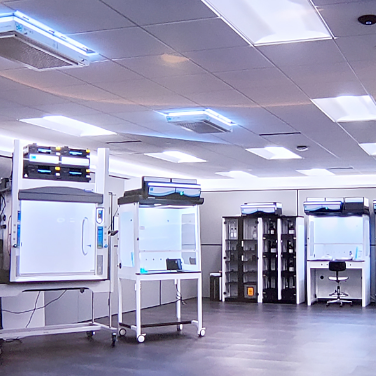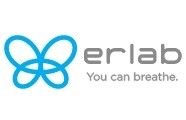The Cost of Air and the Impact on the Laboratory
Engineered controls, like fume hoods, are an integral part of most laboratory facility planning.
Fume hoods have a significant impact on building infrastructure, are energy intensive, and basically, remove conditioned air from the building. The extracted air then needs to be brought back into the building for the HVAC to adequately balance temperature, humidity, and pressure. Ducted fume hoods impact the building’s need for larger air handlers, boilers, chillers, cooling towers, and exhaust fans due to the amount of air that needs to be processed.
Studies have calculated that laboratories consume an average of 66 percent or two-thirds of a building’s total energy load while occupying only about 25 percent of the facility's usable space.
How can we address this issue, what are some possible solutions, and how do we address these very real problems while achieving carbon neutrality?
Alternative engineered control systems (ECS), including ductless filtering fume hoods, are one answer.
Cascade Effects
When a lab is designed with ductless filtering fume hoods (DFH) as the primary ECS, the impact includes carbon reduction. As we aim for carbon neutrality by 2030, the DFH plays a significant role in achieving this goal. Obvious savings can be found in reducing peak exhaust output, but that reduced exhaust air output allows buildings to achieve much more.
Let’s look at the impact of an Erlab project at Bristol Community College in Massachusetts.
The Bristol high-performance laboratory was originally designed to include 22 ducted fume hoods, which had a combined intake and exhaust of 70,000 cubic feet per minute (CFM). It required three air-handling units (AHU), one with run-around loop heat recovery and one with enthalpy wheel energy recovery.
The proposed Erlab Zero Net Energy (ZNE) design replaced that equipment with:
- 13 filtered hoods
- 4 ducted hoods
- CFM: 24,000 intake and exhaust
- 2 AHUs
- Enthalpy wheel recovery
Along with the air reductions, the ZNE design included a combination of ground and air-source heat pumps, enthalpy heat recovery wheels, fan coil units, centralized Indoor Air Quality (IAQ) monitoring, and natural ventilation. It reduced mechanical, electrical, and plumbing (MEP) to just 14 percent of the gross square footage (GSF). Additionally, the PV arrays, half of which would have supplied the 22 ducted hoods, would be used to recover energy to help achieve ZNE.
A Holistic Approach to Safety
Fume hoods and containment devices should be designed with safety as the priority. When considering ductless filtering fume hoods, chemical handling needs must be assessed to determine whether they are suitable for filtration. If so, a filter life cycle must be proposed based on analysis using AFNOR NF X 15 211, ANSI z9.5-2022, CSA Z316.5-2020, and NFPA 45-2023 edition standards.
The Bristol project considered many factors, including hood filtration performance. The hood’s chemical listing booklet must provide the overall retention capacity of the filter prior to any release (under 1 percent) of the chemical threshold limit value (TLV). This reflects the life cycle of the filter and the maximum time between replacements.
Under normal operating conditions, a ductless filtering fume hood must also be able to guarantee user protection during two operating phases: detection and safety. One misconception about ductless filtering fume hoods is that they can be used for only small amounts of chemicals or for odor mitigation. In reality, Erlab hoods are approved for 80 percent of pharmaceutical, organic chemistry, agriculture, flavor and fragrance, and other common applications.
Safety does not stop with the fume hood but continues throughout the chemical life cycle. Proper controls must be in place to protect the breathing zones of people working in the lab. These are achieved through a combination of filtering storage, whole room air filtration, integrated filtration packs for safety cabinets, and filtering fume hoods.
The various safety aspects should be monitored: face velocity, filtration efficiency, and ambient air pollution. Continuous monitoring provides critical safety metrics and helps establish more effective lab safety protocols.
Conclusion
While we may be reluctant to change, we must consider what’s best for the environment. Embracing new technologies can have a significant impact on the future. As we increase our understanding of the impact of our actions, we can make changes to improve safety and product performance.
Ductless filtering fume hoods can improve lab design efficiency and increase your flexibility as your lab changes and grows. Filtration protects you wherever chemicals exist and supports your facility’s efforts to reduce its carbon footprint.
Erlab offers 54 years of air filtration technology experience, investment, and dedication to help protect your safety, and let you breathe easier.




